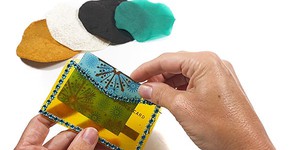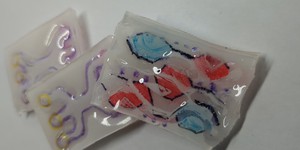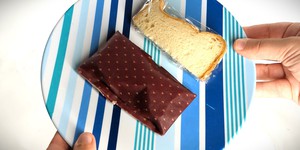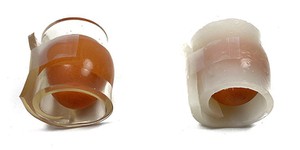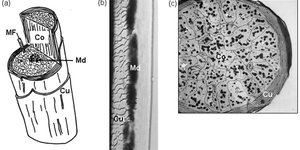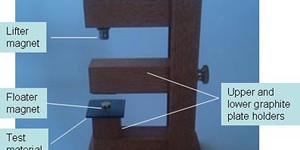Middle School, Materials Science Science Projects (29 results)
Materials science is a fascinating area of research that is often at the cutting edge of science and engineering. It involves both developing new materials and improving on existing ones, and has important applications both for improving daily life and for advancing other fields of research. You can try your hand at making and testing all kinds of substances from plastic to slime.
|
Select a resource
Coding Projects
Sort by
|
What should you NOT forget when going outside on a sunny day? To put sunscreen on! Sunscreen is important because it protects your skin from sunburn. But there are so many sunscreens to choose from: different methods of application (sprays and lotions), different Sun Protection Factors (SPFs), and different ingredients. Which one is best? In this science project, you will test the effectiveness of different sunscreens and find out how water-soluble they are.
Read more
Can you imagine clothing, handbags, or shoes made from seaweed or spider silk? To become more sustainable, the textile industry is looking for ways to develop more eco-friendly fabrics. Biofabrics derived from living organisms such as seaweed or bacteria have been proposed as a potential alternative to conventional fibers. In this science project, you will make several biofabrics from alginate (seaweed) and conduct tests to find out which one is most suitable as a textile replacement.
Read more
New
Can AI understand human language? In the future, AI could aid in emergency interpretive service in the hospital when translators aren't available. But can current AI algorithms understand non-verbal languages like sign language? In this science project, you will test whether AI can learn sign language gestures or phrases to see if it can be used for interpretation.
Read more
Microfluidic devices are small tools used in different fields like engineering and biomedicine. Scientists and engineers use these devices to work with very tiny amounts of fluids for various experiments. These experiments can include things like biomedical research, creating new medicines, and even applications in the car industry. In this project, you will create and test your own microfluidic device design and compare it to other designs.
Read more
Do you ever use plastic wrap to cover a container? Did you know that it is made of plastic, which significantly contributes to the amount of waste in our landfills? There are many alternatives to plastic, and one popular product is beeswax wraps. Are beeswax wraps a suitable replacement for plastic wrap? Find out in this experiment!
Read more
Many foods, such as fresh fruits, vegetables, or eggs, are packaged in plastic to protect them from damage during handling and transport. But is plastic the best choice? What if a more sustainable and biodegradable material could replace it? Researchers have begun exploring hydrogels—squishy materials that can hold a lot of water—as alternative packaging materials. In this science project, you will make your own hydrogels from gelatin and cornstarch and investigate what ratio of…
Read more
New
How do you feel right now? Do you remember how you felt a few hours ago? How about yesterday or last Wednesday? What if you could track your emotions throughout the day and use this information to help improve your mood and well-being? In this science project, you will program a simple, pocket-sized device that you can carry around with you to log your feelings whenever you want or on a specific schedule.
Read more
It's hard to imagine a world without paper. You wouldn't have things like books, cards, comics, newspaper, construction paper, notebooks, cereal boxes, or that nice sound of shredding wrapping paper on your birthday. There was a time, though, when the only thing people had to write on were slabs of soft, squishy clay. When these slabs dried in the sun, they preserved simple ideas, but they were heavy, like carrying around a load of rocks. Not exactly easy to put in your pocket and carry around.…
Read more
Does your hair go crazy when the weather turns damp? Did you know that strands of hair can relax and lengthen when the humidity increases and then contract again when the humidity decreases? In fact, hair strands can be used as the basis for a hygrometer, a device which measures the humidity level in the air. Can a human hair hygrometer also detect changes in hair structure caused by chemical lightening? This project shows you how to find out.
Read more
What happens if you hold a magnet next to water? You might think that water is not affected by magnetism, but in fact, the water is slightly repelled. Believe it or not, if the magnet is strong enough, you can use this effect to levitate objects that contain water, including insects and even small frogs! In this science project, you will learn about diamagnetism. Materials that are repelled by both poles of a magnet are called diamagnetic. The magnets you will use are not strong enough to float…
Read more
You've probably noticed that the price of gasoline has been going up and up lately. Heating oil will probably cost more this winter than last winter, too. Using good insulation material is one way to conserve energy and save money. What insulation materials work better than others?
Read more
Do you ever go camping with your family and roast hot dogs and marshmallows over a campfire? If you want your campfire to burn long into the evening, what is the best wood to use? Do research on the necessary conditions/materials to sustain a fire and on the properties of different types of wood. Which properties do you think will be most important for determining how fast the wood burns? For example, how do you think density would be related to burning rate? Why? Measure the density and…
Read more
|



